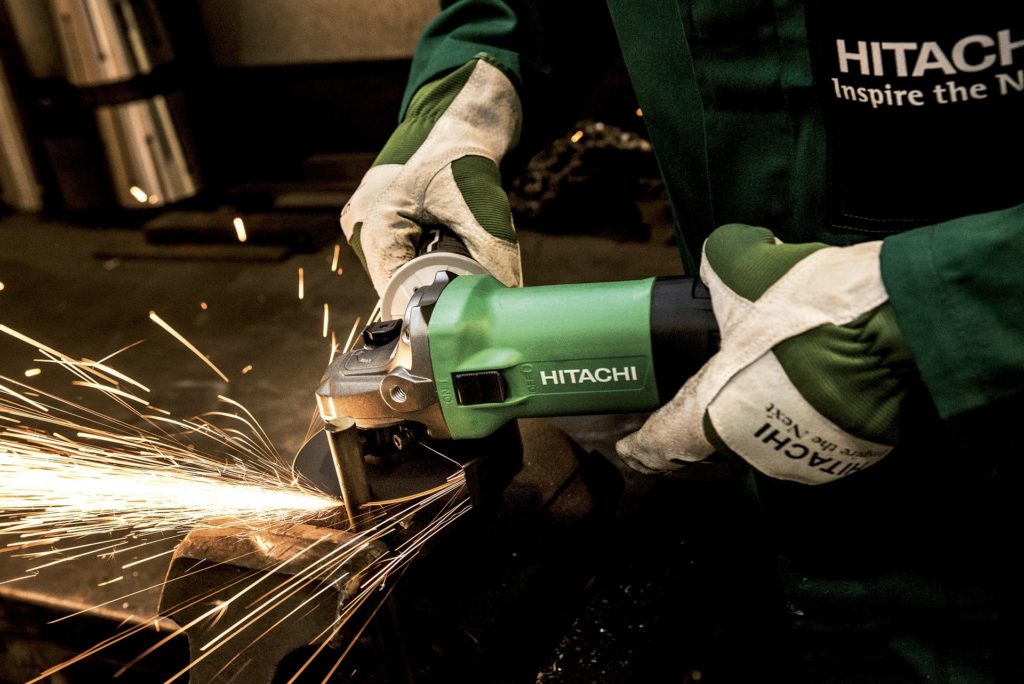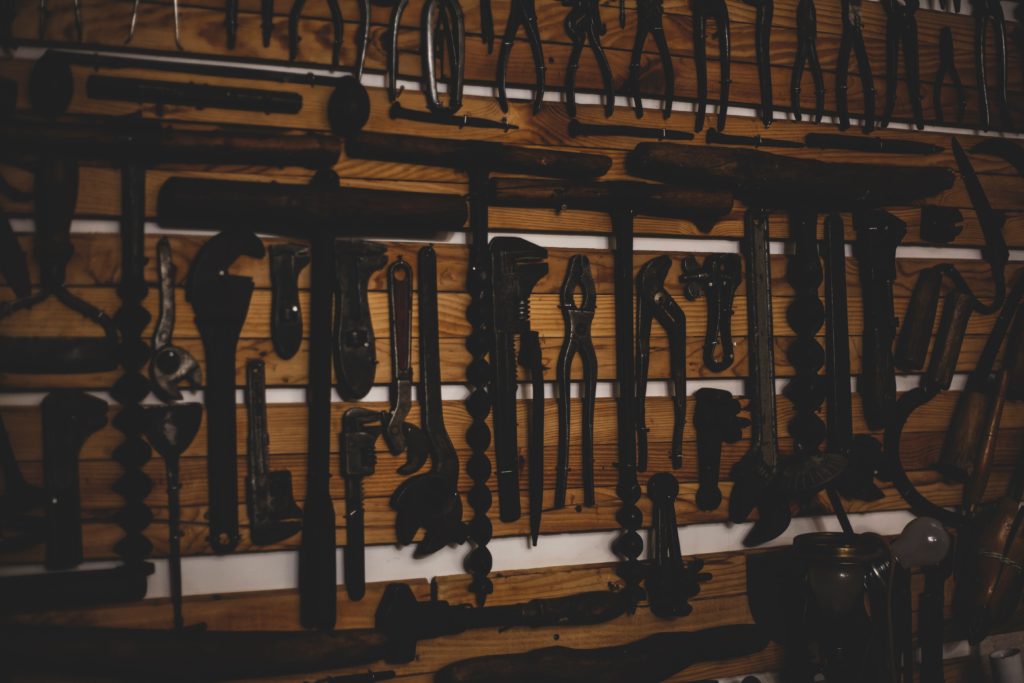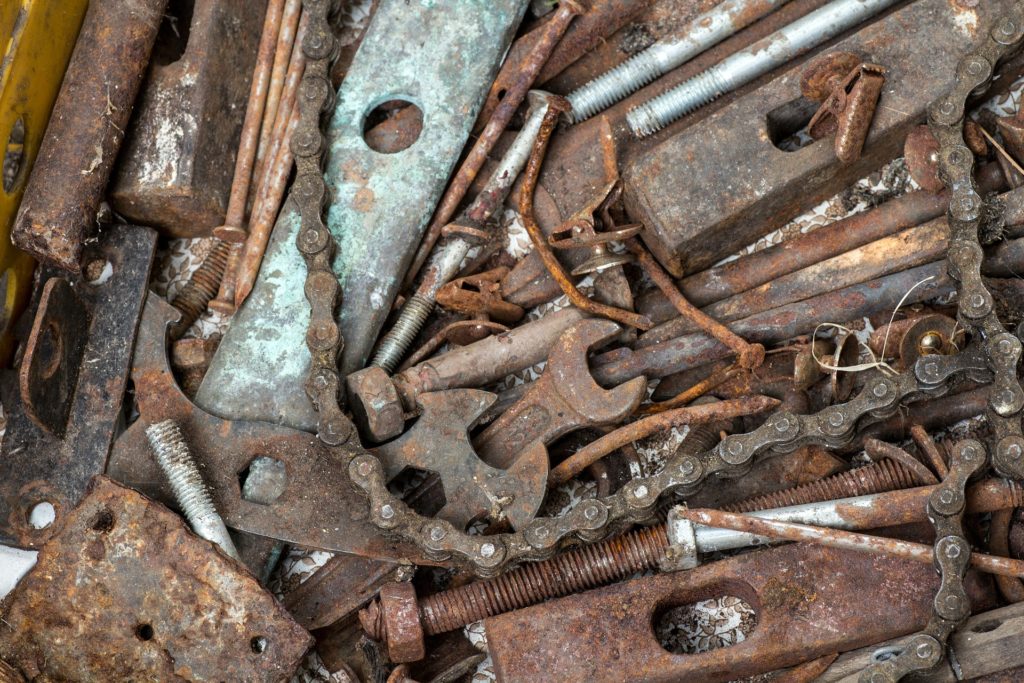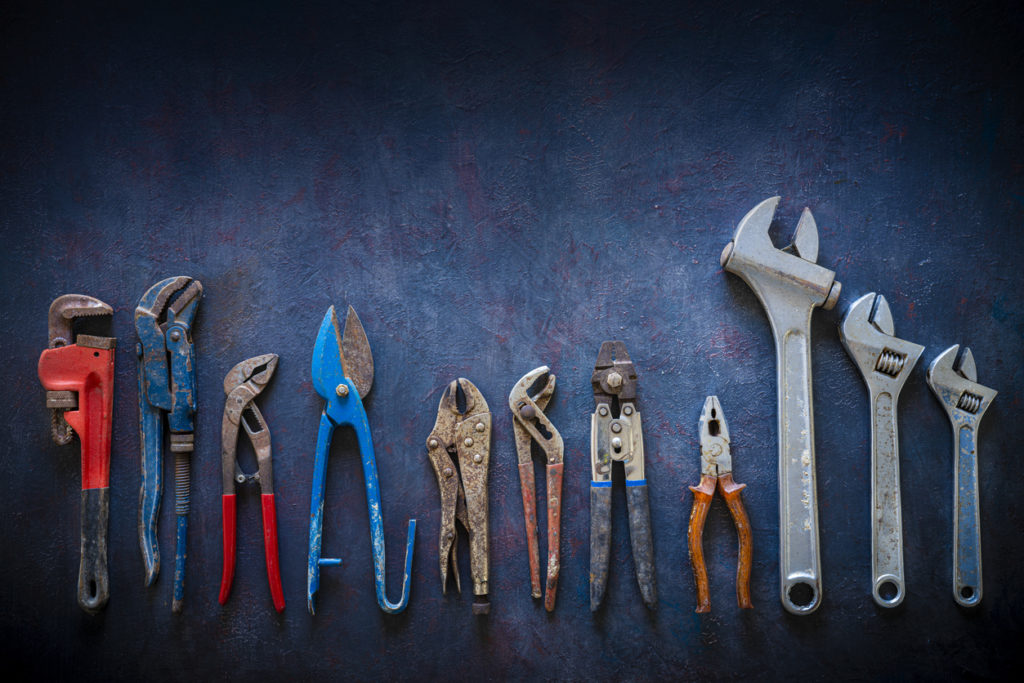Stocking a garage or workshop with high-quality hand tools and capable power tools is a major undertaking. You invest valuable time and spend hundreds of dollars choosing and purchasing the tools that you will use to complete household projects and make emergency repairs. So, taking care of them just makes sense. This post will cover the importance of maintaining a clean and orderly workplace, and the tips it contains could keep your tools working like new for years to come.
Protecting Your Investment
We clean items before putting them away because we want them to be ready for use the next time we need them. Taking care of an unpleasant chore right away instead of putting it off is always smart. It’s an especially good idea in the workshop or garage because a minute or two of cleaning and preventive maintenance can add years to the life of a hand or power tool. Adding this to your routine could really pay dividends because the dirt and grime that builds up on hand tools can dull edges and impede performance. The dust that accumulates inside power tools can cause overheating and operating problems. Tools are usually kept in areas that provide little protection against humidity and extreme temperatures, so they need all the TLC they can get.
How To Clean Tools
You should get into the habit of at least wiping down your tools every time you use them. A few seconds of gentle rubbing with a rag or towel should be enough to remove dust, debris, and grease. Then you will have clean surfaces to check for signs of damage or wear. Once you have wiped your tools down and checked them over, there are a few other cleaning and maintenance tasks that you might want to take care of. These include:
- Sharpening: Some bladed tools require regular attention, but gardening implements like pruners, shears, and shovels require sharpening only every six months or so. To sharpen these tools, use a coarse file to work the edge until you have a 45-degree bevel. You can also use a file to remove nicks or hone dull areas on an already sharp blade. If you really want to make gardening chores a snap, hone the edges of your bladed tools with a sharpening stone.
- Grinding: Repeated striking can cause the metal heads of chisels and wedges to flatten, spread out, and form a lip. If this lip is not removed, it can fly off when you use the tool. This is obviously a serious safety issue, so make sure that you inspect striking tools closely before you put them away. If you see a lip forming near the striking surface, use a file or grinder to remove it.
- Sanding: If your tools have wooden handles, check them for breaks or cracks that could produce splinters. If the wood is damaged or feels rough, use sandpaper to smooth it down. Start by sanding against the grain if the wood is particularly rough, and then sand with the grain to remove the last traces of roughness. Finish the job by applying a thick coat of linseed oil to protect and rejuvenate the wood.
- Looking for rust: Power tools and hand tools with metal components should be inspected carefully for the first signs of corrosion. When rust is spotted early, spraying the affected area with WD-40 should be enough to nip the problem in the bud.
- Lubricating: You can also use a lubricating spray like WD-40 to protect metal and keep tools with moving parts working properly. Spray a fine mist to protect metal components from rust and corrosion, and then remove any excess with a dry rag or towel.
- Throwing out: If you notice damage that could make a tool dangerous to use, you should throw that tool out or arrange to get it repaired. Broken tools can be lethal, so don’t take any chances.
How To Clean Power Tools

Hand tools that have languished undisturbed in garages or basements for years or even decades will probably work just fine, but power tools are a bit more sophisticated. Motors capable of slicing through metal or punching through walls produce a lot of power, and that puts a great deal of strain on their mechanical and electrical components. Power tools that are casually tossed to one side after use rarely last very long, but a little time and effort could change that. If you want your power tools to work when you need them, here are some chores that you should not overlook:
- Deep cleaning: A quick wipe-down may be more than enough to keep a hammer or screwdriver in pristine working condition, but you will have to work a bit harder to keep a modern power tool running. Use a damp cloth to clean out grilles, vents, and other hard-to-reach areas, and use a cotton swab dipped in WD-40 to clean the inside of the intake and exhaust ducts.
- 55 Towels/Roll; 12 Rolls of Scott Shop Towels Original/Case; 660 Towels/Case; Original Blue Shop Towels; 9.4"x11" sheets
- These multi-purpose blue shop towels are designed for cleaning up grease, absorbing liquids, oils and spills in automotive repair shops and garages.
- Absorbs 2X more than the leading value brand shop towel; durable and work well even when they're wet
- Soft, cloth-like towels designed for tough jobs but soft enough to use on hands (not for use on compromised skin)
- Available in a portable roll or Pop-Up Box format for on-the-go jobs
- Blowing out dust: The air in the environments where power tools are used is often thick with dust and debris. Dust is sucked into power tools by cooling systems that are designed to prevent electric motors from overheating, and it settles into every nook and cranny. Placing a shop vacuum against vents will remove most of the dust, but you will need a can or two of compressed air if you want to do a really thorough job.
- ❤【LARGER CAPACITY】Stanley SL18116P Wet / Dry Vacuum has a larger capacity over 22 L, makes small clean-up jobs a breeze for you as you don’t have to empty the bucket frequently any more.Runtime: 300.0 hours
- ❤【VERSATILE & POWERFUL】Thanks to the 4 peak HP motor, this vac offers powerful enough suction needed to almost any cleanup jobs in vehicle, jobsite, workshop, garage, basement, van, house, etc
- ❤【3 in 1 FUNCTION】With this versatile vac you can vacuum both wet liquid spills and dry debris, dust, saw, dirt or blow leaves away(use blower port), just organize the hose and power cord on top handle and side wraps after using, conveniently
- ❤【FARTHER CLEANUP】With over 16 ft of cleaning reach(6 ft hose, 10 ft power cord and 3 pieces of extension wands) it’s easy to do a farther cleanup for you without unplugging the unit, while it has four swivel casters for convenient and easy manoeuvrability
- ❤【WHAT YOU GET】Stanley SL18116P Wet / Dry Vac x 1, 1-1/4"x6’ super flexible hose x 1,extension wands x 3, gulper nozzle, floor nozzle x 1,crevice nozzle x 1,foam filter x 1, dust bag x 1, reusable dry filter x 1, 12-Month Warranty
- Inspect power cords: If your power tools plug into the wall, check all cords and plugs for signs of fraying or damage. If you notice any exposed wires, do not use the tool until a professional has examined it and pronounced it safe.
- Check moving parts: After you have disconnected your tool’s power supply, gently tug on any gears, belts, or pulleys you see to make sure they are unimpeded. Add a little lubricant if you feel unexpected resistance or hear some odd noises, and use basic hand tools to tighten up screws, nuts, and bolts.
- Lubricate: A thin film of lubricating spray can keep power tools working and prevent corrosion, but too much can attract dirt and create a whole new set of problems. This is why it is so important to wipe off excess lubricant with a cloth every time you use this product.
- Since 1894 this versatile multi-purpose drip oil has been a trusted tool used by professional tradesmen and do-it-yourselfers
- Lubricates, cleans and protects against rust and corrosion. Offers precise application with no overspray or splatter, and its updated packaging has a fill level indicator strip that shows you when you're running low
- Great for wheels, casters, sliding doors, chains, power tools and external parts of small motors, hinges, nuts and bolts, bicycles, wheels, fans and many other moving parts
- Squeeze bottle design offers control over the amount of lubricant dispensed. Size is ideal for Automotive, Marine, Home, and Shop use
- Marksman Twist Spout makes it easy to use and apply product exactly where you want it
- Replace worn parts: Some power tool parts are standard wear items that must be replaced from time to time. It is best to order replacement parts long before you need them, so check bits, blades, seals, and filters every time you put your power tools away.
- Charge your battery: You want your power tools to be ready to go when you need them, so keep their batteries charged. However, you should not charge batteries to 100% unless you plan to use them immediately. Storing lithium batteries fully charged or fully depleted shortens their lives. Storing them 80% charged appears to be the sweet spot.
- Check everything: You don’t want any unpleasant surprises the next time you use your power tool, so switch it on to make sure it’s running before you put it away.
The Importance of Proper Tool Storage

Keeping your garage or workshop well-organized will prevent you from losing tools. It could also save you a lot of time when you have an emergency repair to complete and you need a tool that you haven’t used in months. Placing your tools in a robust and watertight plastic container will also keep moisture and rust at bay. You should have a separate, smaller box for small tools like screwdrivers and wrenches that you use often, and hang garden tools like rakes and shovels on a wall to keep them off the damp ground.
Many power tools come with plastic cases or vinyl covers, and these items may also be available as accessories. Power tools come in many shapes and sizes, and they often have parts that protrude at odd angles. Cases or covers make sure these parts are protected, and they also serve as a highly efficient barrier against dust.
What Should You Use To Clean Hand and Power Tools?

Elbow grease is just about the best hand tool cleaner there is. You may need a few drops of WD-40 to remove corrosion and embedded grime, but keeping hand tools in excellent condition really comes down to effort. When tools are really dirty, and a cleaning agent of some sort is needed, a dish detergent formulated to cut through grease should be more than up to the job.
When people ask about tool cleaners, what they really want to know about are usually rust removers. The best way to deal with corrosion is to prevent it from forming, but there are steps that you can take if the orange blight has already taken root. Here’s how to tackle rust:
- Spray: Before you get started, spray the corroded area with WD-40. This will penetrate the corrosion and begin to dissolve the rust.
- Everything you need in a professional-grade Penetrating Lubricant: Low-odor, Strong, Fast, and Targeted. WD-40 Specialist Penetrant with a Smart Straw to Spray 2 Ways
- Fast-acting formula breaks rust and corrosion that jam up parts and leaves behind a protective layer that prevents future corrosion
- If it's stuck, WD-40 Specialist Penetrant can help - nuts, bolts, threads, locks, chains, and more
- Target the smallest crevices between threads or cover large areas as easily with the Smart Straw sprays 2 ways: Regular or Precise, Wide or Narrow, Broad or Targeted
- Experts around the world trust WD-40 Specialist formula to deliver professional grade protection every single time
- Brush: Give the WD-40 about 20 minutes to do its work, and then use a wire brush to remove the rust. If there is only a small amount of corrosion, you may be able to tackle it with steel wool.
- 【Versatile Cleaning】Stainless steel metal brush cleaning rust, corrosion, and tough stains, while the brass brush ensures effective metal surface cleaning without a scratch, and the gentle nylon brush is perfect for delicate surfaces cleaning.
- 【Premium Quality】Made with high quality plastic and bristle materials, our wire brushes are known for reliability, durability, and outstanding cleaning results, designed to last.
- 【Wide Usage】Whether it's in the kitchen, bathroom, garage, or workshop, our comprehensive brush set fulfills your cleaning needs in various scenarios, making it your all-in-one cleanliness solution.
- 【Effortless Handling】Our brushes feature ergonomic handles for comfortable use during extended cleaning tasks. Plus, the small-sized brush is perfect for efficient cleaning in tight spaces.
- 【Complete set】Our wire brush set provides you a variety of brushes, including 3 large brushes (stainless steel, brass, nylon) and 3 small brushes, all neatly packaged for your convenience.
- Clean and degrease: Use a water and dish detergent mixture to clean and degrease the area you have just cleared of corrosion. Rust thrives on moisture, so make sure that you dry the area thoroughly with a clean cloth when you’re done.
- 10x GRIP-ROOT WEAVE - TRAP MORE, WORK LESS: Ultra-absorbent microfiber towels for car Grip Root weave works like PLANT ROOT FOLLICLES, sucking up & LOCKING AWAY 8x to 10x its weight in liquid, particulates, moisture, grime and dirt in far LESS TIME than traditional ‘Heavy Duty’ Cleaning Rags. Each towel features a 2.5mm thick design, providing enhanced durability and better grip during use.
- WON’T LINT, SCRATCH, PILL, SWIRL, SHED, or BLEED like thin, cheaply made microfiber towels for cars. RAPID DRY release layers make these the ideal microfiber towels for cars, creating that spectacular, SWIRL-FREE MIRROR SHINE with our cleaning rags. With a solid 2.5mm thickness, these towels are built to prevent damage while ensuring optimal performance.
- LASTS 1200+ WASHES - That’s 3.27 YEARS worth of use in this 12-pack of COMMERCIAL GRADE 300 GSM microfiber towels. The 2.5mm thickness and OVERLOCK BRAIDED STITCHING makes the ideal SUSTAINABLE SOLUTION for cleaning every SURFACE, crack, and CREVICE in your home, garage, or office.
- SOAK IT UP FASTER - 4X’s MORE ABSORBENT than COTTON cloths, these are the microfiber cleaning cloth for cars to get if you want an ALL PURPOSE cleaning towel, crafted with 2.5mm thickness to scoop up your messes, oils, and liquids FASTER than a SPONGE
- UNRIVALED POWER - TEST THIS GRIP-ROOT technology risk-free for 30 full days. With a 2.5mm thick design, it LOCKS AWAY dirt, dust, grime, spills, and messes better than any other high-performance cleaning rags you’ve tried.
- Protect: Before you put your rust-free tool away, apply a thin film of protecting lubrication to prevent rust from reappearing.
- 16-PB PENETRATING CATALYST
- PENETRATING CATALYST
Safety First
Hand and power tools are designed to cut and punch into some of the toughest materials around, so even cleaning them can be dangerous. Before you take a cloth or cleaning solution to a tool that could cause an injury, check the owner’s manual to make sure you’re following all of the proper safety protocols. If you can’t find your owner’s manual, visit the manufacturer’s website to download a new one. Here are other things you can do to make cleaning tools a bit safer:
- Wear PPE: Wear sturdy gloves when removing corrosion from edged tools, and put on goggles if you use a wire brush to remove lumps of rust.
- Cut the power: Never work on power tools that are plugged in or have their battery packs attached.
- Clear some space: Garages and workshops can be tight and cramped spaces, so you may need to move outside to have room to work. You should clear enough space to allow you to inspect and work on your tools in an organized and methodical way, which normally requires an area at least as large as a dining table.
Maintenance Tips and Buying Insights
If you want to wring everything you can from the money you spend, 360PowerTools has posts like this one that can help you to get the most out of the products you buy. When the time comes to buy new power tools, you can rely on our tool reviews and product roundups to point you in the right direction. We tell you about a tool’s disadvantages as well as its benefits, and we don’t pull our punches.







